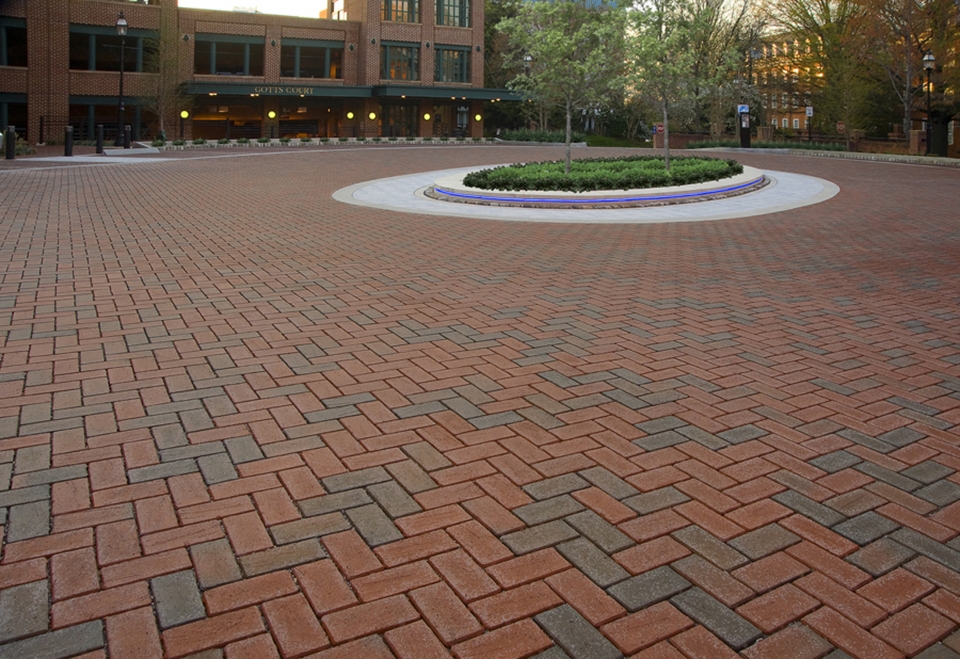
In structure, paving, also known as turf or concrete, is any surface area or exterior flooring made of aggregates of materials that can be put into a plainly excavated region. The term "paving" derives from your Latin verb panis indicating "of the sky". Paving may be accomplished on roads, but usually, the paving is performed on the interior of buildings.
Paving can be used to construct outside floors. In general, paving is done on paved places so that they may be used for entertainment, for parking lots, for flowerbeds, for patios, for sidewalks, for driveways, etc. Usually, there are two types of paving: one is called the paver strip, which really is a narrow border with uneven joint parts on a paved surface, on which the paving bricks are usually laid; and the second is the poured paver, where the bricks are poured straight onto the paving stop, without the help of a paver strip. address here remove can be used on very narrow spots. Before, paving blocks were made of organic paver stone, but today almost all paver stones are usually cast in plaster of Paris (Preston-Kershaw) or pressed from cemental mud.
Another type of paving material that's widely used is definitely paving stone. It consists of irregularly formed, large rectangular bricks laid in broad, sloping lines. These bricks are usually square or rectangular typically, but can also be discovered oblong, octagonal, round, triangular, or even heart-shaped. Typically, paving More Information and facts are cemented using a crushed limestone to make them strong. They will have many applications including driveways, walkways, patios, sidewalks, curbs, retaining walls, fireplaces, wall space, etc.
You may also use paving components on your patio or driveway. When learn here have a concrete patio, you should use pavers to range it also to provide a level and appealing surface area for strolling on. If you want the look of natural stones, you may want to line your walkway using them. The material useful for walkways should be durable to hold against sharp objects enough, such as for example wood, metal, or rocks. If you work with pages, you need to let them sit down for several days between laying and driving them, in order that they will harden. The year To help keep your walkway looking great throughout, check it regularly for cracks, holes, or maintenance.
If your driveway or veranda is cracked, you might have a issue with the integrity of the paving rocks. You may find that cracks run all across the amount of one edge from the paving stones, or that they run in a few parallel rows. Either real way, you may want to replace some or all of your web pages. Cracks in concrete slabs are tough issues notoriously, but when you have noticed small cracks in your concrete slabs before they've started to crack, you can prevent the nagging problem from getting worse by taking a few actions in order to avoid it in the future. One particular avoidance technique is to arranged the sizes of your cement slabs correctly.
You can tell if a paving block is too large for the area it's being installed in by looking at the overall size of the crack. For example, if you visit a small break near one advantage of the paving slab, but the entire slab is the same size as it seems, this is possibly not advisable. Small cracks in paving bricks or other construction materials have a tendency to grow and spread over time, meaning unless you remove them, you'll soon have a whole slab of cracked pavement. On describes it , if you see an obvious crack near an advantage of a slab and the entire slab is the same size as it appears, you almost certainly shouldn't be concerned about it, since it is a little crack and will most likely not spread into a whole crack.
Another universal problem with DIY paving tasks is uneven stone or other terrain conditions. If Read More Listed here have a large area that should be paved, there is no method to be sure that the area will undoubtedly be level. look at more info is also true if you are paving near a retaining wall. You don't desire to put a stone 50 feet from a retaining wall as the stone might shift as time passes, eventually making the wall unstable. If you have a perfectly level piece of ground Even, it's never smart to lay paving bricks or other materials directly on top of a layer of water or snow since it could cause serious damage to a newly laid concrete slab.
One last thing that many people fail to think about with regards to laying paving gems is that various kinds of material require various tools and approaches for installation. The issue with DIY paving will be that you don't have professional tools, so you end up attempting to do the working work is likely to way. If you make an effort to utilize the wrong equipment for that working job, you may end up with unsightly pavers that don't last long or that wear out quickly due to wear and tear. It's best to hire a contractor to get the job done right the very first time, but if you wish to make things less difficult on yourself, you can learn a variety of techniques which will allow you to lay your pavers more quickly and more efficiently.